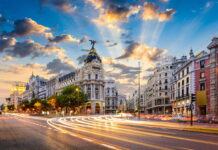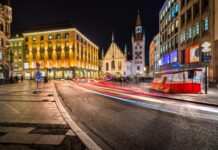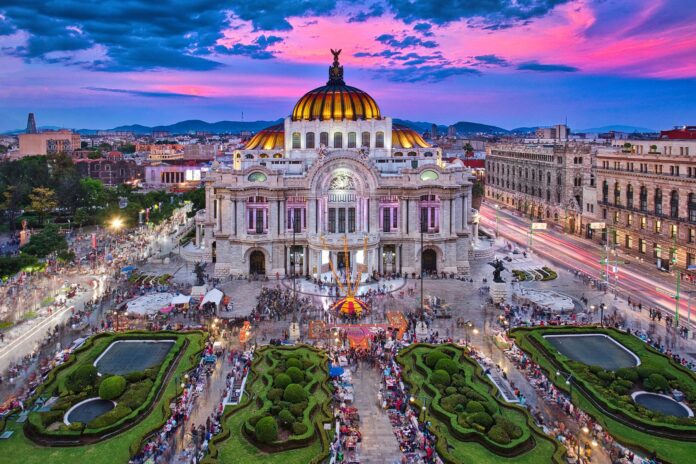
Mexico City, the vibrant capital of Mexico, is a city steeped in history and cultural heritage. From ancient ruins to colonial architecture, the city offers a captivating glimpse into its rich past. It is a melting pot of indigenous cultures, Spanish influence, and modern-day dynamism. In this blog post, we will embark on a journey through time, exploring the ancient ruins and cultural treasures that make Mexico City a captivating destination.
Teotihuacan: Ancient Ruins of the Pre-Columbian City near Mexico City
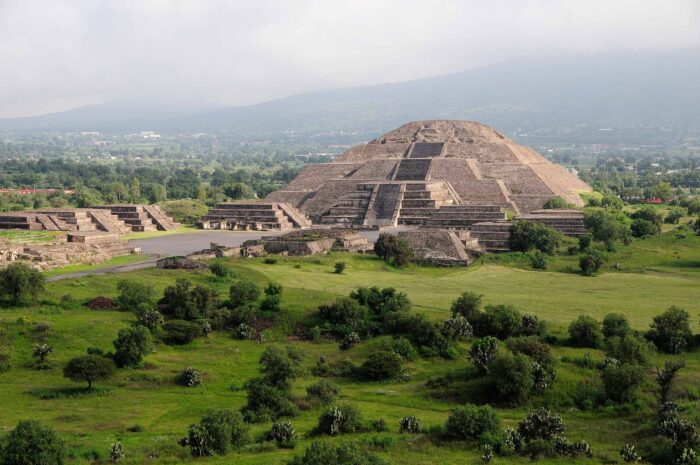
Our first stop takes us to Teotihuacan, a UNESCO World Heritage site located just outside Mexico City. This ancient pre-Columbian city flourished from around 100 BCE to 650 CE and was one of the largest cities in the world at its peak. Walking through its imposing pyramids and broad avenues, such as the Pyramid of the Sun and the Avenue of the Dead, one can’t help but marvel at the architectural prowess of the Teotihuacanos. For a breathtaking view of the entire complex, consider taking a Mexico helicopter tour, soaring above the ruins and witnessing the grandeur of this ancient civilization from a unique perspective.
Templo Mayor: Exploring the Aztec Ruins and Their Religious Center
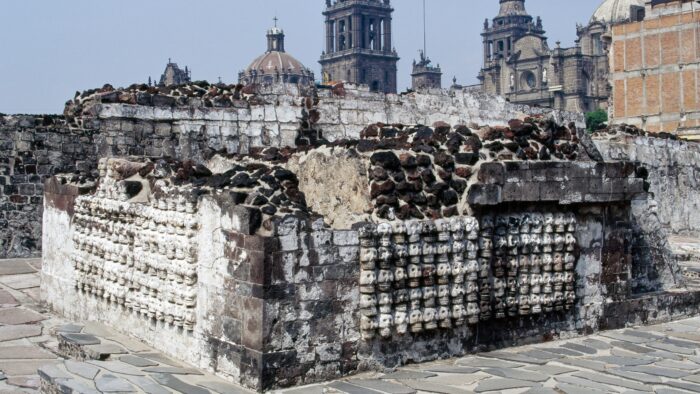
Next on our historical journey is Templo Mayor, the main temple of the Aztec capital of Tenochtitlan, which stood on the grounds where modern-day Mexico City now lies. This archaeological site offers a glimpse into the religious and ceremonial practices of the Aztecs. As you wander through the excavated ruins, you’ll discover intricate stone carvings, sacrificial altars, and artifacts that provide insights into the Aztec civilization. A guided tour is highly recommended to fully appreciate the significance of this site and the cultural context it represents.
National Museum of Anthropology: Showcasing Mexico’s Diverse Indigenous Heritage
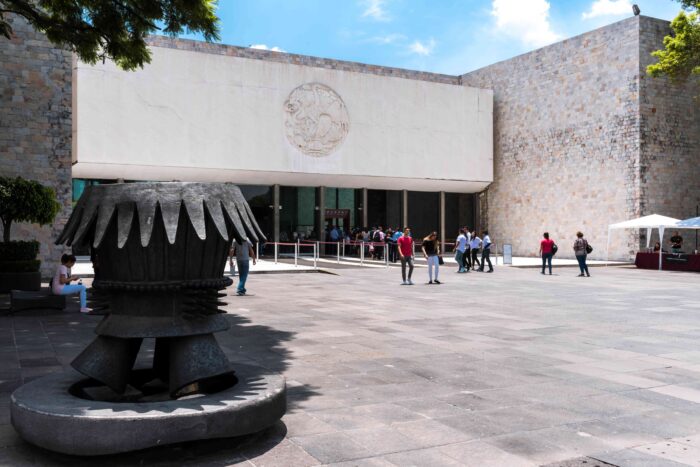
To delve deeper into Mexico’s indigenous heritage, a visit to the National Museum of Anthropology is a must. This world-class museum houses an extensive collection of artifacts from various indigenous cultures across Mexico. From the colossal Olmec heads to the intricate Mayan sculptures, the exhibits offer a comprehensive overview of the country’s ancient civilizations. The museum also provides valuable insights into the cultural diversity that still exists in Mexico today. Take your time to explore the exhibits and engage with the interactive displays that bring the history to life.
Historic Center: Discovering Colonial Architecture and Vibrant Markets
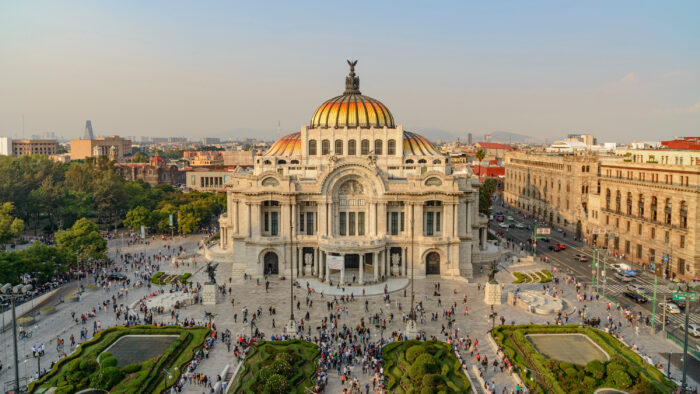
The Historic Center of Mexico City, also known as Zocalo, is a UNESCO World Heritage site that showcases the city’s colonial past. The grand architecture of the Metropolitan Cathedral and the National Palace dominates the main square, while narrow streets lined with colorful buildings beckon you to explore further. Make sure to visit the bustling markets, such as Mercado de la Merced and Mercado de San Juan, where you can immerse yourself in the sights, sounds, and flavors of traditional Mexican cuisine. From vibrant textiles to artisan crafts, the markets offer a treasure trove of authentic souvenirs.
Chapultepec Park: Exploring the Iconic Castle and Its Historical Significance
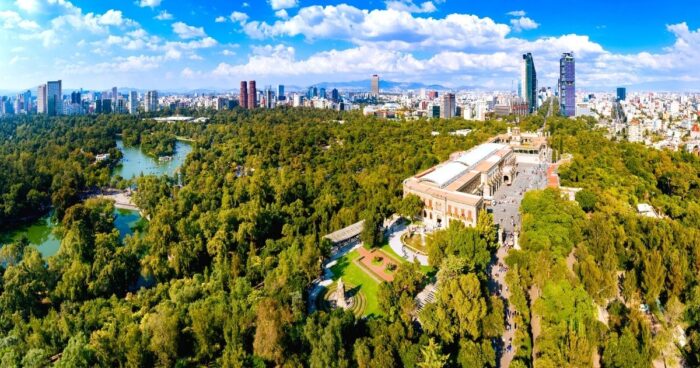
Within Mexico City’s boundaries lies Chapultepec Park, one of the largest urban parks in the world and a site of great historical significance. Nestled within its lush greenery is Chapultepec Castle, once the residence of Mexican emperors and later transformed into a museum. The castle offers panoramic views of the city and houses an impressive collection of art and historical artifacts. Stroll through the park’s peaceful gardens, visit the nearby Modern Art Museum, and take a moment to relax by the serene lake. Chapultepec Park is not only a place of natural beauty but also a testament to Mexico’s historical legacy.
Xochimilco: A Journey Through Ancient Floating Gardens and Canals
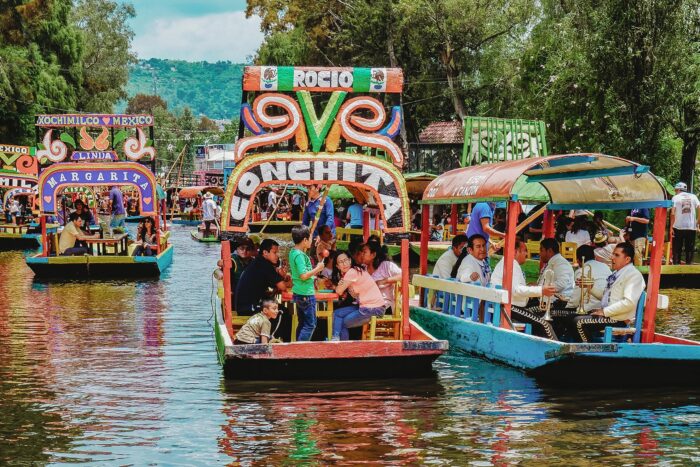
Venturing south of Mexico City, we arrive at Xochimilco, a district renowned for its ancient floating gardens and canals. This UNESCO World Heritage site offers a glimpse into the ingenuity of the Aztecs who created a complex system of canals and artificial islands known as chinampas. Embark on a colorful trajinera boat and meander through the canals, surrounded by vibrant floating gardens and traditional mariachi music filling the air. This immersive experience transports you back in time and provides a unique perspective on the relationship between nature and human innovation.
Frida Kahlo Museum: Delving into the Life and Art of Mexico’s Beloved Painter
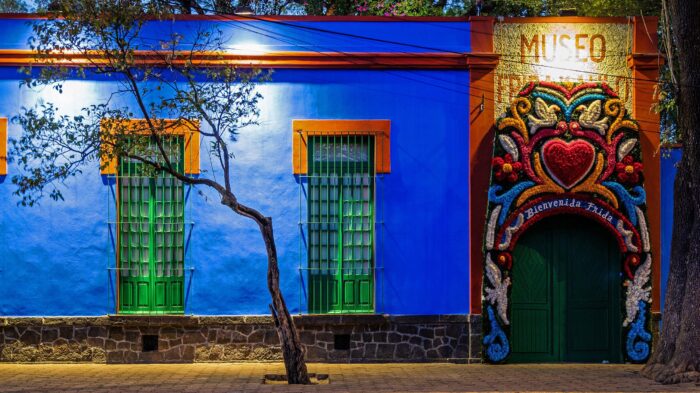
No exploration of Mexico City’s cultural heritage would be complete without a visit to the Frida Kahlo Museum, also known as Casa Azul. This iconic blue house was the birthplace and lifelong residence of the renowned Mexican artist Frida Kahlo. Step into her world as you wander through the rooms adorned with her vivid artwork, personal belongings, and the lush courtyard that inspired much of her work. Gain a deeper understanding of Kahlo’s life, her struggles, and her profound impact on the art world. The museum offers a fascinating insight into the artist’s creative process and her enduring legacy.
The Zocalo: Uncovering the Heart of Mexico City’s Historic District
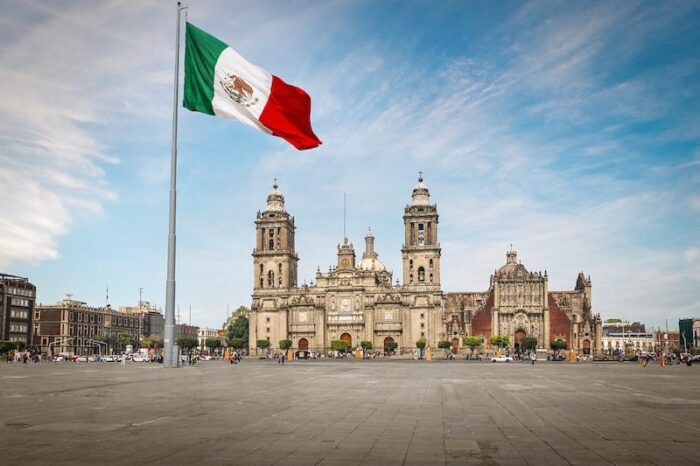
Returning to the heart of Mexico City, we find ourselves at the Zocalo, the main square and historic center of the city. This bustling plaza is not only a gathering place for locals but also a vibrant hub of cultural and political significance. Surrounding the square, you’ll find architectural marvels such as the Metropolitan Cathedral, the National Palace, and the Templo Mayor ruins. Explore the Zocalo’s vibrant atmosphere, where street performers entertain passersby, and vendors sell traditional crafts and delicious street food. As you soak in the vibrant energy of the Zocalo, you’ll feel connected to Mexico City’s past and present. Take your time to discover this mesmerizing place and book your stay in advance. Search for vacation rentals in Mexico City with cozycozy.
Conclusion: Reflecting on Mexico City’s Rich Past and Cultural Legacy
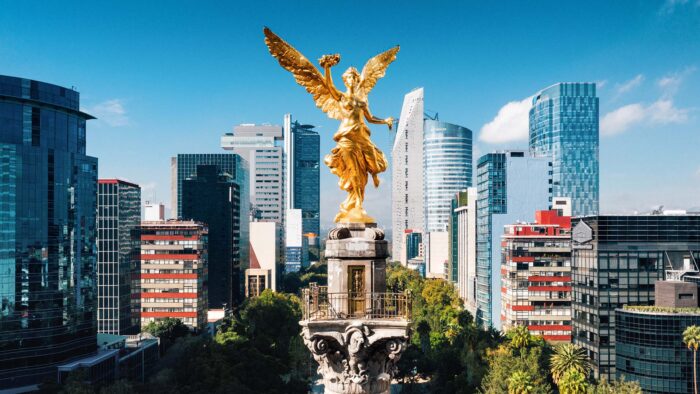
Mexico City’s rich history and cultural heritage are an integral part of its identity. From the ancient ruins of Teotihuacan and Templo Mayor to the colonial architecture of the Historic Center, the city offers a tapestry of diverse influences. The National Museum of Anthropology preserves and celebrates Mexico’s indigenous roots, while attractions like Chapultepec Park and Xochimilco provide glimpses into the city’s natural and artistic heritage.
To truly appreciate Mexico City’s historical significance and cultural wealth, it is important to engage with the sites, museums, and local communities. Whether you’re exploring the ruins, admiring artwork, or enjoying the vibrant markets, each experience contributes to a deeper understanding of Mexico’s past and present.

